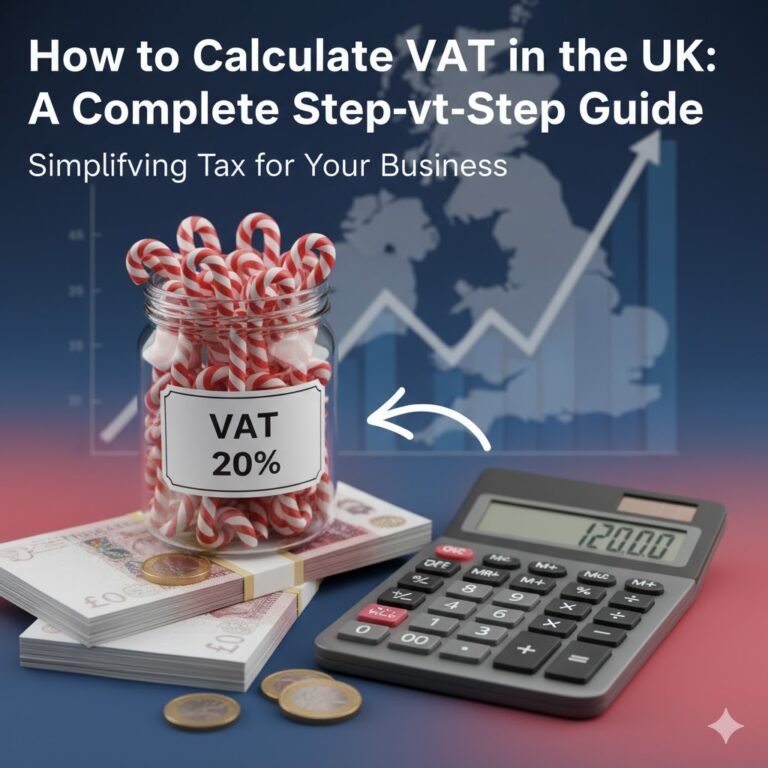Value Added Tax (VAT) is one of the most important components of the UK taxation system. Whether you run a small business, operate an e-commerce store, issue invoices to clients, or simply want to understand how VAT works on everyday goods and services, knowing how to calculate VAT in the UK is essential. This guide explains everything clearly—VAT rates, calculations, formulas, examples, and when you should charge or reclaim VAT. We will also mention how a VAT Calculator can simplify your calculations instantly.
What Is VAT in the UK?
VAT (Value Added Tax) is a consumption tax applied to most goods and services sold in the United Kingdom. Businesses registered for VAT must add VAT to their sales price and submit VAT returns to HMRC, usually every quarter.
VAT applies at each stage of production and distribution, but the end consumer ultimately pays the cost. VAT-registered businesses can reclaim VAT paid on business expenses, known as input VAT.
Current VAT Rates in the UK (2025)
The UK has three main VAT rates:
- Standard Rate – 20%
Applies to most goods and services such as electronics, clothing, restaurants, consultancy services, digital products, etc. - Reduced Rate – 5%
Applied to selected goods such as children’s car seats, domestic fuel, energy-saving materials, and certain health products. - Zero Rate – 0%
Applies to essential goods like most food items, books, children’s clothes, public transport, and newspapers.
Some goods and services are VAT exempt—for example, insurance, education, and some financial services. Exempt is different from zero-rated, as you cannot reclaim VAT on exempt supplies. Know More About the Tax Calculator for the United Kingdom.
When Do You Need to Charge VAT?
You must charge VAT if:
- Your business is VAT registered.
- Your taxable turnover exceeds the VAT threshold (currently £90,000).
- You sell taxable goods/services in the UK.
You do not charge VAT if:
- You are not VAT registered.
- Your goods/services are exempt.
- You operate below the VAT threshold voluntarily.
How to Calculate VAT in the UK
Calculating VAT depends on whether you need to add VAT to a price or remove VAT from a VAT-inclusive amount. Below are the formulas and examples.
How to Add VAT (20%) to a Net Price
If your product price does not include VAT, and you need to add VAT, use this formula:
Formula:
VAT Amount = Net Price × 20%
Total Price (with VAT) = Net Price × 1.20
Example:
A product costs £100 (net).
VAT = 100 × 20% = £20
Total (including VAT) = 100 + 20 = £120
2. How to Calculate Reduced Rate VAT (5%)
Formula:
VAT Amount = Net Price × 5%
Total Price = Net Price × 1.05
Example:
Domestic electricity bill: £200 net
VAT = 200 × 5% = £10
Total = £210
3. How to Remove VAT From a VAT-Inclusive Price
If a price already includes VAT (gross price) and you need the net price:
Formula (20% VAT):
Net Price = Gross Price ÷ 1.20
VAT Amount = Gross Price − Net Price
Example:
Gross price = £120
Net price = 120 ÷ 1.20 = £100
VAT = 120 − 100 = £20
4. VAT Formula Summary
| VAT Scenario | Formula |
| Add 20% VAT | Net × 1.20 |
| Add 5% VAT | Net × 1.05 |
| Remove 20% VAT | Gross ÷ 1.20 |
| Remove 5% VAT | Gross ÷ 1.05 |
| VAT Amount (20%) | Net × 0.20 |
| VAT Amount (5%) | Net × 0.05 |
How to Calculate Input VAT and Output VAT
VAT-registered businesses must track:
Output VAT (VAT you charge customers)
Example: You sell a product for £100 + 20% VAT → Output VAT = £20.
Input VAT (VAT you pay to suppliers)
Example: You buy materials worth £50 + 20% VAT → Input VAT = £10.
VAT Owed to HMRC:
VAT Payable = Output VAT − Input VAT
If input VAT is higher, you receive a VAT refund.
When to Use a VAT Calculator
Manually calculating VAT can become time-consuming, especially if you deal with multiple invoices, various VAT rates, or mixed supplies. A VAT Calculator simplifies the process by automatically:
- Adding or removing VAT
- Handling 20%, 5%, and 0% rates
- Giving instant net, VAT, and gross values
- Helping businesses prepare invoices
- Checking accuracy before submitting VAT returns
- Reducing calculation errors
Linking a VAT Calculator on your website improves user experience and helps visitors calculate VAT in just one click.
Examples of VAT Calculations (Real-Life Scenarios)
Example 1: Selling a Service
Freelancer charges £500 (net).
VAT @ 20% = £500 × 0.20 = £100
Customer pays = £600
Example 2: Removing VAT from a Receipt
Receipt shows £240 gross.
Net = 240 ÷ 1.20 = £200
VAT = £40
Example 3: Business VAT Return Calculation
Output VAT (charged): £800
Input VAT (paid): £350
VAT to pay HMRC = 800 − 350 = £450
Common Mistakes When Calculating VAT
- Confusing zero-rated items with VAT-exempt items
- Charging VAT without being registered
- Not applying the correct rate
- Incorrectly removing VAT from a gross price
- Forgetting that shipping may require VAT
A VAT Calculator helps avoid these errors.
Conclusion
Understanding how to calculate VAT in the UK is essential for businesses, freelancers, online sellers, and even customers. Whether you’re adding VAT, removing VAT, calculating output or input VAT, or preparing quarterly returns, the formulas are straightforward once you understand the basics. Using a reliable VAT Calculator makes the entire process quicker and more accurate—saving time, preventing mistakes, and ensuring compliance with HMRC rules.
